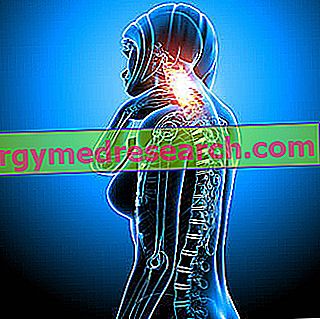What is Prosciutto
The term ham refers to the thigh (hind limb or fresh ham) of the domestic pig (Genus Sus, Sow species, Subspecies domesticus - binomial nomenclature: S. scrofa domesticus ); from the gastronomic point of view, "prosciutto" is also synonymous with two types of salami: prosciutto and cooked ham .

Similar cold cuts
Erroneously, due to a certain aesthetic and gustatory similarity, the term "cooked ham" can also be taken to mean the cooked shoulder, or a salami made with the front cuts of the pig. Furthermore, there is no lack of types of ham derived from animals belonging to different genera and species, such as venison ham, wild boar ham, etc.
NB: Abroad, "ham" means exclusively cured ham.
Nutritional Properties
Whole and Degreased Ham Fat
Fresh ham or pork leg is a cut of lean meat. This is a characteristic that is at least "ambiguous", given that, by observing the tables on the composition of foodstuffs, the raw and cooked hams NOT PRIVATE OF VISIBLE GREASE are characterized by a good lipid content; in reality this discrepancy is easily justifiable.
- The production and preservation of raw ham (and to a lesser extent) of cooked ham requires anatomical preservation of the thigh; in theory, before cutting, the butcher should eliminate ONLY the rind of the ham, while the subcutaneous fat also represents "edible part" of the food (otherwise, reference is made to hams "deprived of visible fat").
- As far as the fresh leg is concerned, on the other hand, although the portioning requires the maintenance of both the rind and subcutaneous fat, these components are evaluated as "waste" or "not edible part" and, as such, are not counted in the analysis chemical-nutritional food.
- Finally, during the production process of the hams, the pork leg loses an important part of water, which leads to an increase in the concentration of all nutrients, including fats
The difference in the amount of "edible portion" between raw ham, cooked ham and pork leg is clearly visible by comparing the values mentioned in the food composition tables - INRAN sources:
| Ham | Edible part |
| Uncooked ham - skinned | 100% |
| Any cooked ham without skinned | 100% |
| Pig, heavy, thigh | 90% |
| Pig, light, thigh | 87% |
Furthermore, by comparing the two INTEGRI salami but shaved off with an analogue "deprived of visible fat", the abysmal difference in the lipid content emerges at a glance:
| Ham | Lipids on 100g of edible part |
| Parma ham | 18.4g of lipids per 100g of edible portion |
| Raw Parma ham deprived of visible fat | 3.4g of lipids per 100g of edible portion |
| Baked ham | 14.7g of lipids per 100g of edible portion |
| Cooked ham deprived of visible fat | 4.4g of lipids per 100g of edible portion |
Put simply, pork ham (both fresh and preserved) is a cut that can be lean or fat depending on cleansing; by depriving the ham of "visible fat" it is therefore possible to use a fairly lean food, while maintaining the animal's fatty tissue, the ham retains a high level of fatness. NB . It goes without saying that along with the amount of fat contained in the ham, the overall energy supply also increases proportionally.
There are also other significant nutritional differences between the various types of ham; below we will cite some examples, taking care to prefer the most representative ones.
Nutritional values
Nutritional composition of raw ham, cooked ham and pork leg - Reference values of INRAN Food Composition Tables
The following table shows the highest values in yellow and the lowest in blue . Observing the data it emerges that the "cooked ham" possesses the greatest quantity of total fats and saturated fats, while the "light pork leg" is the leanest and with a predominance of polyunsaturated fatty acids (the correlation between saturated fatty acids is known in excess and tendency to hypercholesterolemia and increased cardiovascular risk).
The richest cholesterol ham is the "heavy pork leg", but we do not have all the necessary data. The most caloric (thanks to the proteins) is the "boneless raw ham" while the less energetic is the "light pork leg".
Finally, from the point of view of the sodium content (harmful to hypertensives and, if in excess, a potential risk factor for hypertension for healthy subjects), the food that contains the most is "boneless ham deprived of fat visible ", while at the lower limit there are both" pork legs "(both light and heavy).
| Chemical composition and energy value of foods per 100g of edible portion | Pig, light, thigh | Pig, heavy, thigh | Raw ham, boneless | Raw ham, boneless, without visible fat | Baked ham | Cooked ham, without visible fat | |
| Edible part | 87.0% | 90.0% | 100.0% | 100.0% | 100.0% | 100.0% | |
| water | 75, 2g | 72, 9g | 53, 0g | 57, 8g | 62, 2g | 69, 7g | |
| Protein | 20, 2g | 20, 4g | 26, 9g | 29, 3g | 19, 8g | 22, 2g | |
| Lipids TOT | 3, 2g | 5, 1g | 12, 9g | 4, 6g | 14, 7g | 4, 4g | |
| Saturated fatty acids | 1, 13g | 1, 72g | 4, 24g | - g | 5, 10g | - g | |
| Monounsaturated fatty acids | 0, 53g | 1, 99g | 5, 76g | - g | 6, 05g | - g | |
| Polyunsaturated fatty acids | 1, 26g | 0, 87g | 1, 59g | - g | 2, 45g | - g | |
| Cholesterol | 64, 0mg | 89, 0mg | 66, 0mg | - mg | 62, 0mg | - mg | |
| TOT Carbohydrates | 0.0g | 0.0g | 0.0g | 0.0g | 0, 9g | 1.0g | |
| Starch | 0.0g | 0.0g | 0.0g | 0.0g | 0.0g | 0.0g | |
| Soluble sugars | 0.0g | 0.0g | 0.0g | 0.0g | 0, 9g | 1.0g | |
| Dietary fiber | 0.0g | 0.0g | 0.0g | 0.0g | 0.0g | 0.0g | |
| Power | 110, 0kcal | 128, 0kcal | 224, 0kcal | 159, 0kcal | 215, 0kcal | 132, 0kcal | |
| Sodium | 76, 0mg | 76, 0mg | 2238, 0mg | 2440, 0mg | 648, 0mg | 726, 0mg | |
| Potassium | 370, 0mg | 370, 0mg | 454, 0mg | 495, 0mg | 227, 0mg | 254, 0mg | |
| Iron | 1, 6mg | 1, 7mg | 1.2mg | 1, 3mg | 0, 7mg | 0, 9mg | |
| Football | 12, 0mg | 8, 0mg | 15, 0mg | 16, 0mg | 6, 0mg | 7, 0mg | |
| Phosphorus | 233, 0mg | 176, 0mg | 177, 0mg | 190, 0mg | 250, 0mg | 280, 0mg | |
| Thiamine | 1, 35mg * | 0, 31mg | 0, 60mg | 0, 58mg | 0, 40mg | 0, 52mg | |
| Riboflavin | 0, 20mg | 0, 31mg | 0, 20mg | 0, 20mg | 0.15 mg | 0.25mg | |
| Niacin | 4, 50mg | 3, 80mg | 5, 00mg | 6, 50mg | 3, 20mg | 3, 10mg | |
| Vitamin A | tr | 5, 00μg | 0, 0μg | 0, 0μg | 0, micrograms | 0, 0μg | |
| C vitamin | 0, 0mg | 0, 0mg | tr | tr | tr | tr | |
| Vitamin E | - mg | - mg | - mg | - mg | - mg | - mg | |
Types of Ham
Below are the links to in-depth articles dedicated to the various types of ham
- Raw ham
- Baked ham
- Spanish ham
- Parma's ham



